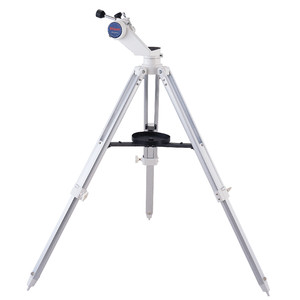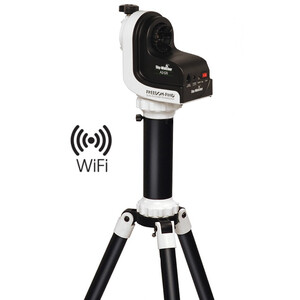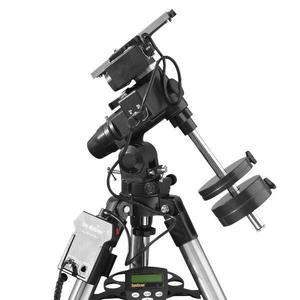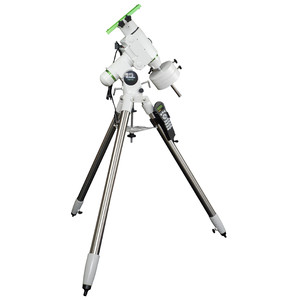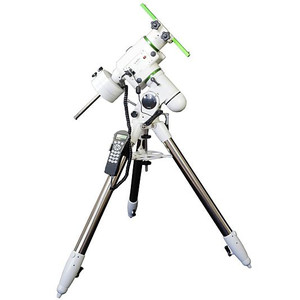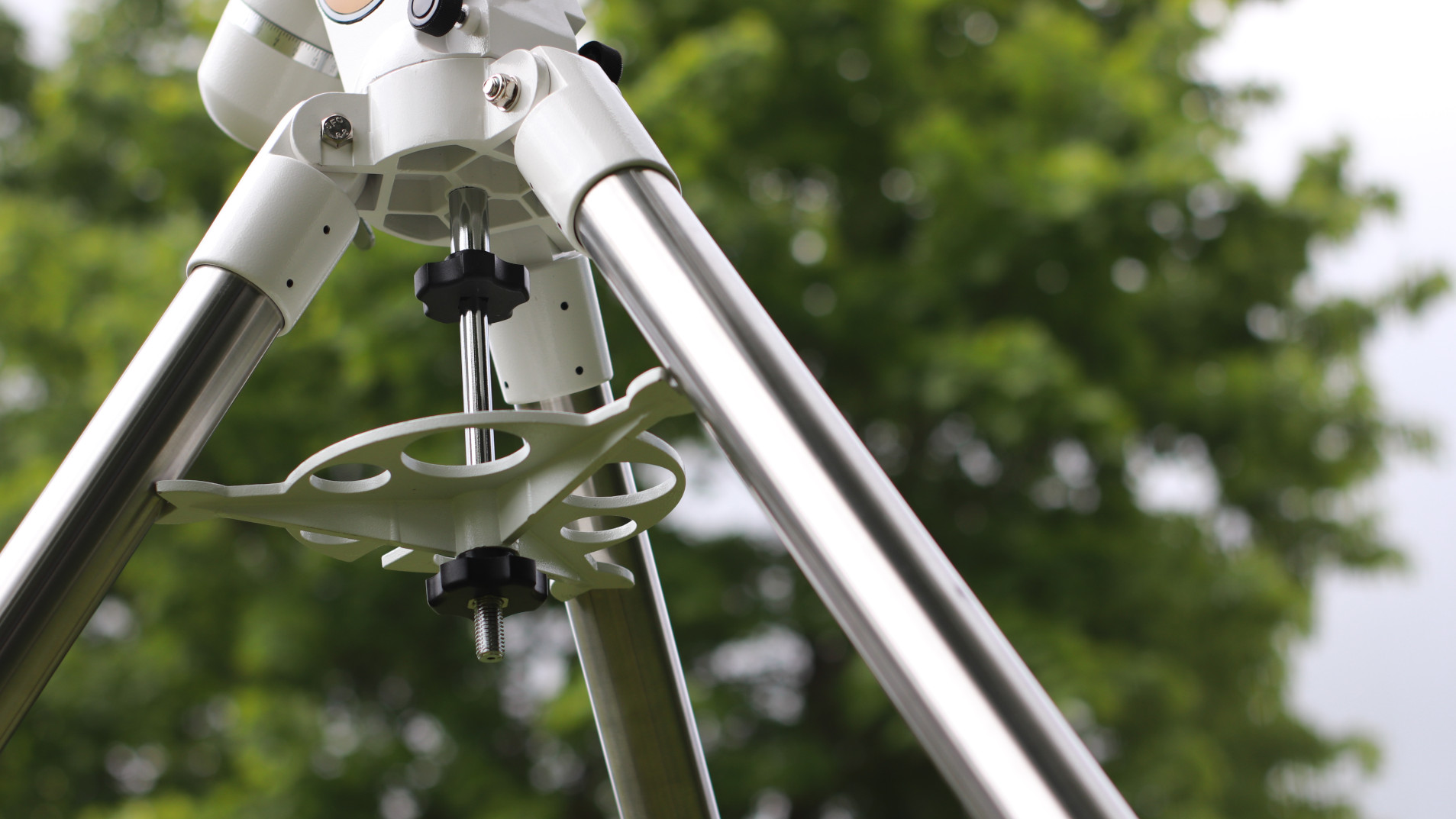Mount
Why a mount is so important and why not every mount is suitable for astrophotography. With recommendations ...
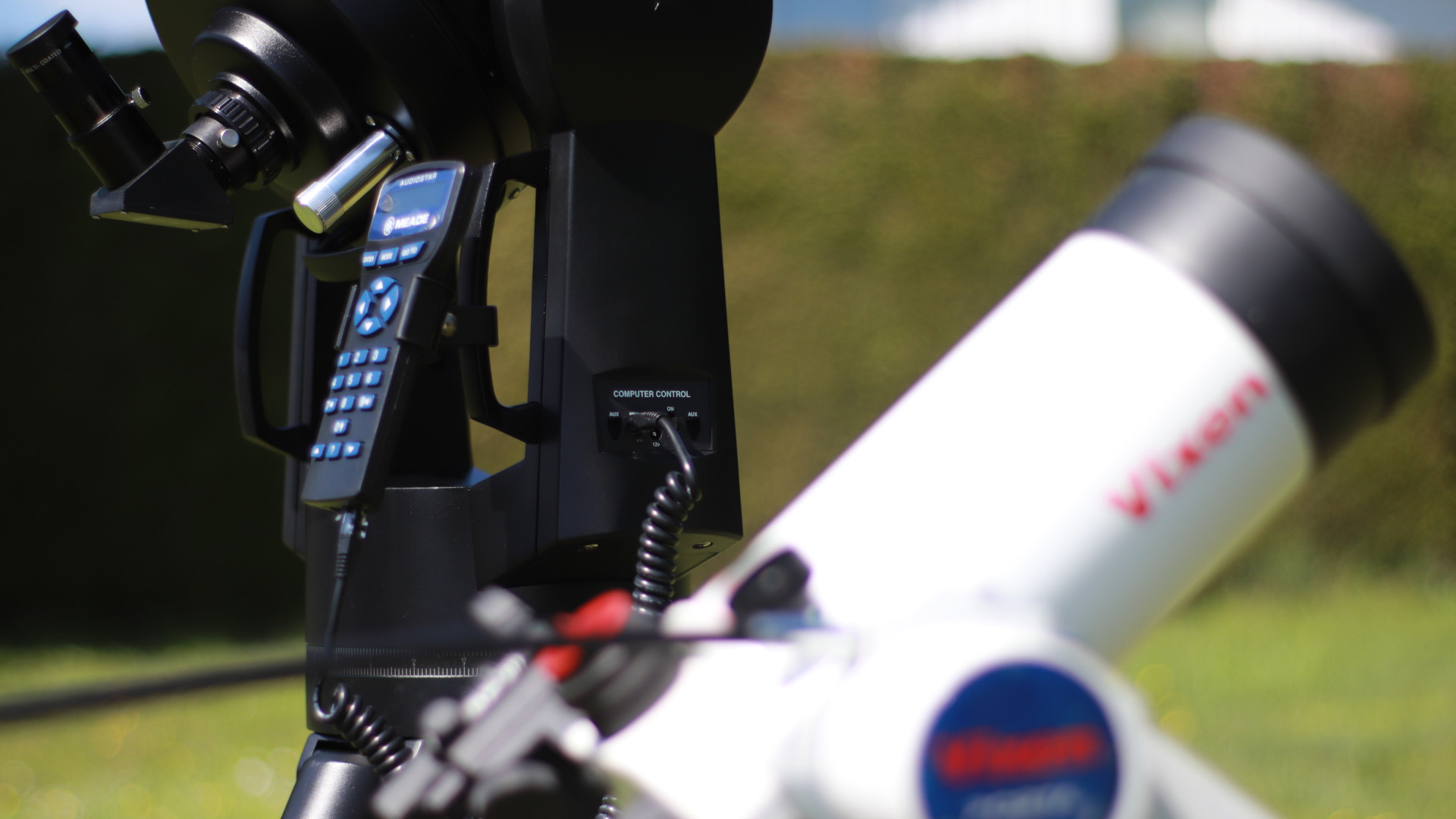
The foundation of the telescope.
An important element of a telescope: the mount. It doesn't matter what construction type it is.
The optics can only be so good: if the mount is useless, observing will never be enjoyable, even with the best optics in the world. When making your choice, pay attention to stability, and it's better to ask us for help, if you are still not quite sure.
Telescopes with a simple altazimuth mount
With an altazimuth mount, the telescope can be moved to adjust the azimuth (horizontal angle) and altitude, and aligned to any chosen object. Most cheap telescopes are mounted on a small fork, but it is possible to track an object with one of these too. In addition, there are the more up-market mounts which will give you a lot of fun with your observations.
The silver bar concept
The telescope has a small silver bar on one side, which can be connected to the fork mount and used to fix the altitude (this is usually the case with the smallest telescopes). The telescope can then be rotated horizontally through 360° on the other axis. This can be fixed in place with a small screw.
Equipped with these mounts, you can find and observe every object in the sky. These versions have the advantage that they are very easy to transport and do not require any additional knowledge. When observing a celestial object, you must adjust the telescope in both axes.
Manually following the Earth's rotation

Due to the Earth’s rotation, a star moves across the sky at a rate of around 0.25° per minute. Objects rise in the east and begin their circular movement there, they reach their highest point at the meridian in the south, and finally descend until they set in the west.
How to track your object
Using an altazimuth mount, here's how to find the object you’re observing again when, after a short time, it drifts out of your eyepiece field of view. This is sometimes not easy if the telescope has a very simply constructed mount, with no fine adjustment. Such a mount is definitely not suitable for astrophotography. This is because an object to be photographed must always remain precisely in the field of view. In addition, the altazimuth mount is also subject to field rotation.
However, there are also easy-to-operate altazimuth mounts, which have two rotary knobs for fine adjustment in both axes. With this you can point your telescope at celestial objects much more precisely. If you are planning to buy a telescope with an altazimuth mount, I would recommend a model with fine adjustment.
The equatorial mount and what it's used for
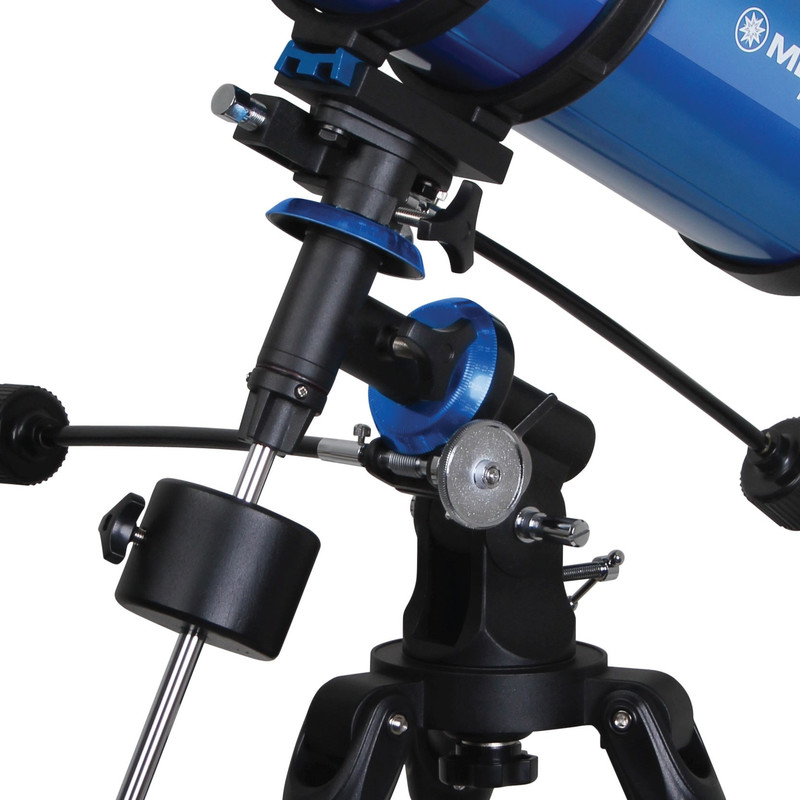
The equatorial mount is aligned to the axis of the Earth and follows the stars in a circular arc. You only need to control one axis instead of two in order to keep an object in the centre of the visual field. Convenient for observing and essential for astrophotography.
There are two versions:
- German mount
- Fork mount
The two mounts look different, but the principle is the same: they consists of two slewing axes.
- Right ascension axis
- Declination axis
The right ascension axis is aligned to the celestial North Pole close to Polaris, so that it is parallel to the rotational axis of the Earth. A polar finder helps with the alignment. The declination axis is perpendicular at ninety degrees.
Fixed and movable
The declination indicates the angular distance of an object above the celestial equator, measured in degrees, up to 90°. The coordinates of the right ascension govern the variable hour angle. Its zero point is the vernal equinox in the constellation Pisces and is given in hours and minutes.
If your telescope is pointed at a specific object, you can find its coordinates in a star chart. The declination is always fixed and corresponds to the information found in the star chart. The right ascension, on the other hand, changes and you can adjust the hour angle using a rotating coordinate ring. Rotate the RA scale until it matches the one given in the star chart. Now you can easily look for another object from the star chart, and find it by using its coordinates.
The Pole Star’s altitude
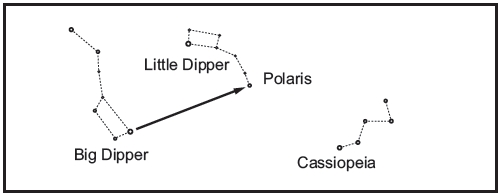
The mount’s two axes are responsible for dealing with the coordinate system in the sky. You can imagine the celestial coordinate system simply as a projection on the celestial sphere. It consists of many curved vertical and horizontal lines, similar to the geographical coordinates on Earth.
Tracking made easy
Once the telescope is aligned with the Pole Star, you can now find any object. Since the Earth is rotating, you will have to compensate for this with the right ascension fine adjustment, in order to keep your chosen star in the centre of the field of view. There is no need to change the declination.
The whole thing is much easier with motors, because you don't have to manually compensate for the Earth's rotation, you simply let the motors do the work. Usually, you will also have an electronic control system.
Total control for astrophotography
For astrophotography, the mount needs to be aligned more accurately than simply with the Pole Star. This is because the Pole Star is not exactly at the celestial north pole, but around 0.5° away from it, and so it can lead to discrepancies over a longer period of time. To carry out this alignment, it is best to use a polar finder, which can be optionally integrated into many mounts.
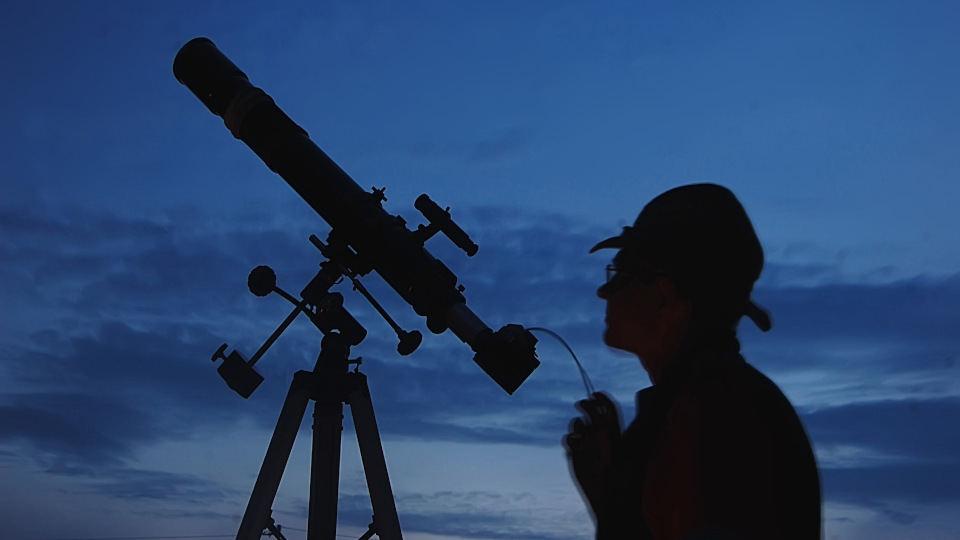
Dobsonian mount - for visual observing fans
A particularly ingenious and at the same time simple concept is the Dobsonian mount. The aim was to have the largest possible telescope on the cheapest possible mount. And they succeeded.
How does a Dobsonian mount work?
A Newtonian telescope sits on a wooden box and can be moved freely in azimuth (horizontal angle) and altitude. The design of the box is very simple: it consists of only a few parts, which are assembled like flat-packed furniture.
To ensure ease of movement, the telescope or the box has sliding and pivoting bearings. This means that you can usually move the telescope into any position with just one finger.
Dobsonian telescopes combine large apertures with unrivalled low prices. If you want to transport the telescope, there is no instrument easier than the Dobsonian. Lift the tube out of the rocker box, and you have the two telescope components in front of you. The telescope is just as easy to put together again.
Whether in the field or in your backyard – simply set up and go. That's the simplicity of a Dobsonian mount. And it has countless fans among amateur astronomers.
What can't a Dobsonian telescope do?
Of course, there are also disadvantages with this type of telescope. However these disadvantages are not that important if you know what the Dobsonian telescope is used for. Because one thing is clear: this is an instrument for visual observers.
Astrophotography is not possible with a Dobsonian telescope. And at very high magnifications, e.g. for planetary observation, it is quite difficult to keep the object in the field of view. However, there are “Dobsonauts" who have found the optimum technique for high-magnification planetary observation.
Recommended mounts
